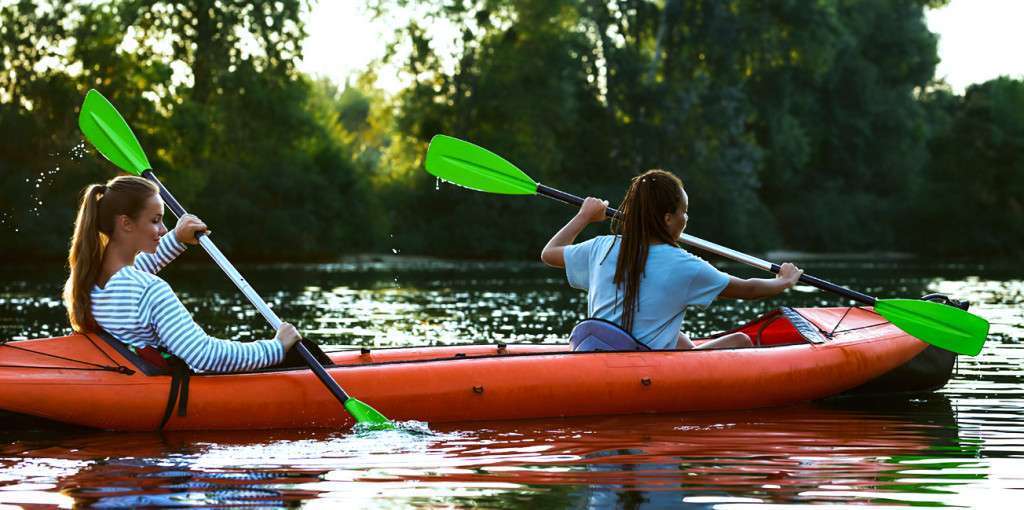Whether you’re out for a mid-summer paddle on a sluggish river or a winter sea kayak expedition, safety equipment makes today’s trip enjoyable and tomorrow’s possible!
The right equipment can make or break a paddling trip. Here are some tips for beginning kayakers on what to look for in paddling gear.
PFD (Personal Floatation Device)
Sometimes called life vests or life jackets, the PFD is your most important piece of safety equipment. In most parts of the world, law requires that there be an approved PFD on board for every occupant of a boat. In the U.S., children under twelve are required to wear them while onboard.
Adults need merely to have access to them, but they’re not of much use when the boat capsizes, and they’re floating around out of reach. Even accomplished swimmers and paddlers should wear them, especially in deep or rapidly moving water where it’s difficult enough to keep track of your vanishing gear without having to worry about keeping yourself afloat.
How to Pick the Right PFD
Frequent paddlers should invest in a properly fitting, Coast Guard approved type III PFD. It should be comfortable when worn correctly with all straps and buckles fastened so that the PFD cannot slip over the head during capsizing. Type I and II vests are acceptable in terms of safety, but Type III’s are more comfortable as they are designed specifically for paddling. These are shorter in the torso so they don’t rub against the kayak’s seatback. Adjustable shoulder straps or neoprene straps keep them from rubbing the chin and riding up around the ears.
Cut away armholes prevent chafing while paddling. Women with large breasts will be more comfortable in PFD’s designed specifically for female paddlers. These have extra room in the front, and some have inserts that can be added or removed, depending upon cup size. Comfort is paramount-if you won’t wear it, it can’t save you, so at the very least, when shopping for a PFD try it on with your paddling clothes, and at best test it on the water. Since a high quality, comfortable PFD usually will cost well over $100, beginners might consider borrowing one until they’ve tried a few and know what works for them.
How to Pick the Right Footwear for Beginning Kayakers
You never know when you may come out of your boat, either because of capsizing or having to portage (carry your boat) around hazards, so proper footwear is important. Many beginners wear old tennis shoes, but these tend to get heavy when submerged.
Warm weather paddlers have some options. Sport sandals such as Tevas work for the occasional paddle. Crocks also are adequate if portage is minimal. If you wear Crocks, they must have a back strap. Crocks and Tevas are better than nothing, but not by much.
As it’s impossible to get in and out of your boat without getting into the water, your feet will be wet for the duration of your paddle. For winter paddling, neoprene boots are a must. However, even in mid-summer, water can be cold, but a pair of wool, polypropylene or synthetic socks will keep your feet toasty, even when wet. If you plan to paddle with any frequency, consider buying a pair of water shoes designed specifically for kayaking.
What to Look for in a Paddling Shoe
- Fasteners that keep the shoe on the foot even in fast moving water.
- Rugged soles that protect the bottom of the foot and provide for good traction over rocky river bottoms and shorelines.
- Soles that are rounded at the heels for proper foot placement and that provide cushioning for heels that press against the boat while the feet are on the boat’s foot pegs.
- Vented bottoms and sides that allow water to flow out of the shoe.
- Constructed of waterproof yet breathable material
Kayaking, while exhilarating, is inherently dangerous, but dangers can be lessened by selecting equipment that adds safety as well as comfort.

